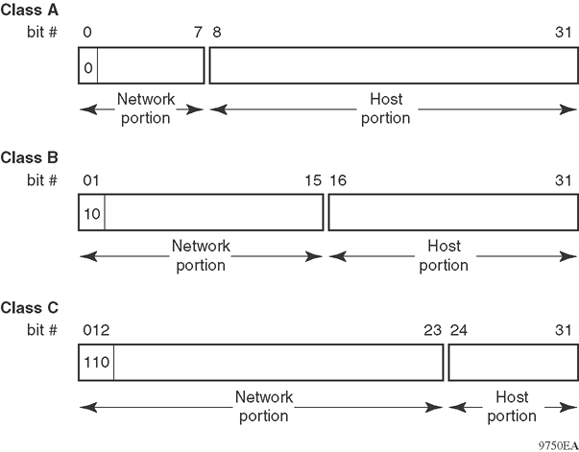IP addressing
An IP version 4 address consists of 32 bits expressed in dotted-decimal format (x.x.x.x). The IP version 4 address space is divided into classes, with classes A, B, and C reserved for unicast addresses and accounting for 87.5 percent of the 32-bit IP address space. Class D is reserved for multicast addressing. The following table lists the breakdown of IP address space by address range and mask.
|
Class |
Address range |
Mask |
Number of addresses |
|---|---|---|---|
|
A |
1.0.0.0 to 126.0.0.0 |
255.0.0.0 |
126 |
|
B |
128.0.0.0 to 191.0.0.0 |
255.255.0.0 |
127 * 255 |
|
C |
192.0.0.0 to 223.0.0.0 |
255.255.255.0 |
31 * 255 * 255 |
|
D |
224.0.0.0 to 239.0.0.0 |
To express an IP address in dotted-decimal notation, you convert each octet of the IP address to a decimal number and separate the numbers by decimal points. For example, you specify the 32-bit IP address 10000000 00100000 00001010 10100111 in dotted-decimal notation as 128.32.10.167.
Each IP address class, when expressed in binary, has a different boundary point between the network and host portions of the address as illustrated in the following figure. The network portion is a network number field from 8 through 24 bits. The remaining 8 through 24 bits identify a specific host on the network.


